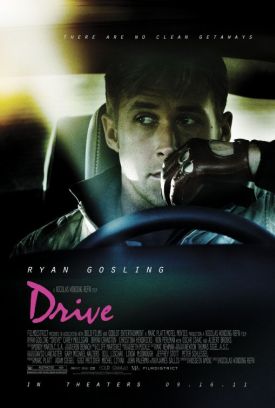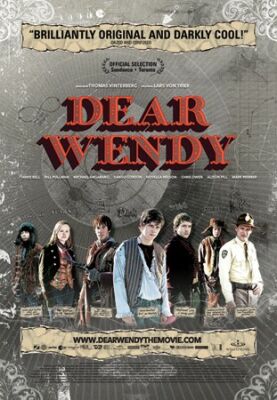What Lies Beneath
The idea of a ghost who comes back from the dead to haunt his murderer is probably as old as murder itself and is familiar to us from the famous scene in Macbeth where Banquo’s ghost appears at the feast. But the idea of a ghost who appears not as a decorous classical shade, a paler version of what he was in life (“my father in his habit as he lived,” as Hamlet says) but as a partially-dissected cadaver mysteriously re-animated is something that only contemporary Hollywood could come up with. In What Lies Beneath, the Super-stiff appears not once but twice in order to save her murderer’s next victim from the same fate she suffered. That she also has the makings of a feminist hero-victim, albeit with a very bad skin condition, suggests that she may have a future as the next Xena, Warrior Princess.
Ghosts in the realistic medium of cinema risk being pretty cheesy contrivances at the best of times, without thus risking outright ridicule. But this movie, directed by Robert Zemeckis to a script by Clark Gregg, gets away with it because it appeals, as did Double Jeopardy of last year, so successfully to a distinctively feminine kind of paranoia. In order to explain what I mean, I must give away, not exactly the ending but the film’s central and most carefully guarded secret. So if you plan to see it in spite of my warnings and don’t want it to be spoiled for you, read no further.
Claire (Michelle Pfeiffer) is married to Norman (Harrison Ford), a hunky genetics professor at a prestigious New England college. Her daughter by a previous marriage to a man now dead has just gone away to college, leaving Claire feeling a bit down in the dumps, but otherwise her life and her marriage are to all appearances perfect. But Norman had an affair with a student, killed her when she threatened to tell his wife and the college dean, and her ghost, apparently having waited for the daughter to leave the house is now haunting Claire. Thus alerted to her husband’s true nature, Claire herself becomes his next potential victim.
You’d think that that would be quite enough drama to be getting on with, but the film takes a curious turn by spending a good three quarters of its time establishing not that Claire is married to a monster but that she is married to a man of an all-too familiar type. Norman is a workaholic who leaves Claire alone for long stretches in their big lake-front house. He is impatient with her imaginings, first that the man next-door has murdered his wife, and then that she herself is being haunted by a ghost glimpsed in her bathtub (oddly, on this and other occasions when she appears to Claire, the ghost appears not as a partially decayed corpse but as the decorous shade we have come to expect). He sends her to a psychiatrist, and Claire comments sardonically to the doctor that her husband is “hoping you’ll pack me with Prozac or lithium or something so he can get on with his work in peace.”
In other words, the film seems to suggest, her real grievance against Mr Perfect Norman, the DuPont Professor of Genetics, is not so much that he’s a murderer as that he hasn’t got any time for her. True, she doesn’t actually know that he’s a murderer yet, but the filmmakers do; and in keeping their secret from us they emphasize Norman’s reactions to his wife’s suspicions and intuitions not as a guilty creature but as a typical man. “You know how important this paper is to me,” he tells her, accusing her of deliberately sabotaging his career with her hysteria. “You’re overreacting,” he says. And later: “Claire, stop it. I know you’re going through something you don’t understand” — perhaps “some kind of empty nest episode.”
And Claire, like a typical woman, is half ready to blame herself. “Ever since the accident,” she tells the shrink, referring to a car crash of the year before, “he treats me like this fragile, loopy — I am seeing ghosts in the bathtub, aren’t I?” But deep down she knows she’s right (the first law of Hollywood paranoia is that the paranoid is always right). “I’m not crazy,” she tells Norman, “and this is not some warped bit for attention. Something is happening in our house, whether you know it or not.”
Of course he does know it, because his actions have made it happen, but the film never suggests that he is deliberately “gaslighting” her to cover up his own crime. So far as we know until near the end he is pretty much what he seems. Instead, like many a non-murdering husband, he is just not listening to her. She is forced to turn instead to her sympathetic New Agey friend Jody (Diana Scarwid), who has just got a divorce and a vintage Karmann Ghia (“lose a husband, get a car” she comments cheerfully) and who is into witchcraft and spiritualism. There is even a suggestion of recovered memory syndrome, since she suddenly remembers that her car accident happened right after a party at which her husband’s mistress, now dead, had been present.
The feminist subtext is pretty clear: women are right to trust their instincts and not to trust men. It’s not as if they don’t know this already. Nor that they suppose it is at all common for professors of genetics to be serial killers as well as husbands. But a reminder that husbands who are not serial killers are likely to be just as dismissive towards their wives’ irrational fears those who are comes as a timely reassurance to post-feminist women that they are absolutely right to dispose of their trust as they do.
Discover more from James Bowman
Subscribe to get the latest posts to your email.






